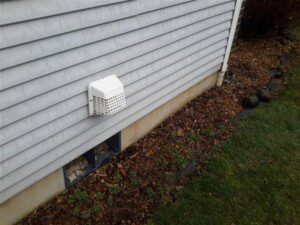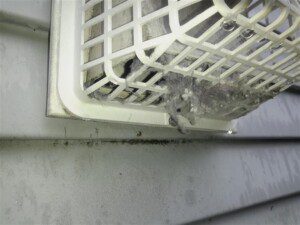A common and heavily used household appliance, the clothes dryer revolutionized the amount of time that people spent cleaning and drying clothes when it was first developed in 1938. While this machine is both handy and efficient, it must be properly installed and maintained to keep it in safe condition.
Dryers work by heating the interior of the spinning drum until the water in the clothes evaporates into water vapor, which is then vented outside by an exhaust duct. Since dryer interiors become very hot, this hot air must be expelled quickly and safely. Through the process of drying, small pieces of clothing called lint are also expelled and are highly flammable.

A dryer vent with a screen, a common cause of dryer fires.
Dryer fires are a common and easily preventable occurrence that are a significant safety hazard to both a home and its occupants. All dryer exhaust ducts should vent to the exterior with minimal amounts twists and turns. Lint that is caught in dryer vents can build up, limiting airflow and causing the machine to overheat. As it overheats and fails, sparks can be produced that ignite the lint, causing a fire that can race from the dryer to the rest of the home very quickly.
Fortunately, dryer fires are easily preventable and can be done with a minimal amount of effort and maintenance. The duct from the dryer to the exterior should be composed of rigid metal with a smooth interior, which helps to minimize the amount of trapped lint. The maximum length of a dryer duct should be no more than 25 feet and as straight as possible. Any bends of 45 degrees should reduce the length by 2.5 feet, while any bends of 90 degrees should reduce its length by 5 feet. This helps to ensure proper ventilation of hot air and water vapor to the exterior. The easiest preventative measure is to clean the lint trap in the dryer before each load. This helps to keep air flow within the dryer consistent and keeps the trap from becoming overloaded, leading to lint traveling through the ductwork.

Dryer vents should not have screens as these trap lint, increasing the chances of a dryer fire.
In conclusion, all ducts should vent to the exterior no closer than 3 feet from any opening to the home. Screens should not be installed at these terminations as this can trap lint and cause the buildup of hot air, which could lead to a fire. Lastly, ducts should not vent into attics or crawlspaces as the moisture laden air encourages mold growth and the introduction of other wood destroying organisms.
